
Porsche development center Weissach
Year:
2015
Parking space:
3100
Porsche Weissach
The staff carpark will be upgraded to ease the search of a parking spot and therefore reduce the stress for co-workers.
An intelligent parking guidance system takes the daily stress out of parking for employees in Germany.
Looking for an empty parking space is a waste of time, and not being able to find a space quickly causes drivers to become stressed and frustrated.
This fact was recognized by the German car manufacturer Porsche and, as such, it has recently installed a parking guidance system for its employees at the company’s engineering center in Weissach, Germany.
Guidance by LED signs
The guidance begins on the approach road to lead the cars to one of three parking garages. More than 120 LED signs guide employees to the nearest available parking spaces.
Single space detection for indoor areas
To detect the occupation of parking spaces inside the parking garages, 2,600 ultrasonic single space sensors with integrated signalization are used.
The advantages of this type of sensor is the freedom of maintenance, the high detection rate with nearly 100% precision and the bright red/green signalization to highlight available parking spaces from distance. The sensors are installed above the parking spaces and measure vehicles using ultrasonic travel-time measurement. Because of the good visibility of the sensors, there is no need for additional space lamps on every parking lot.
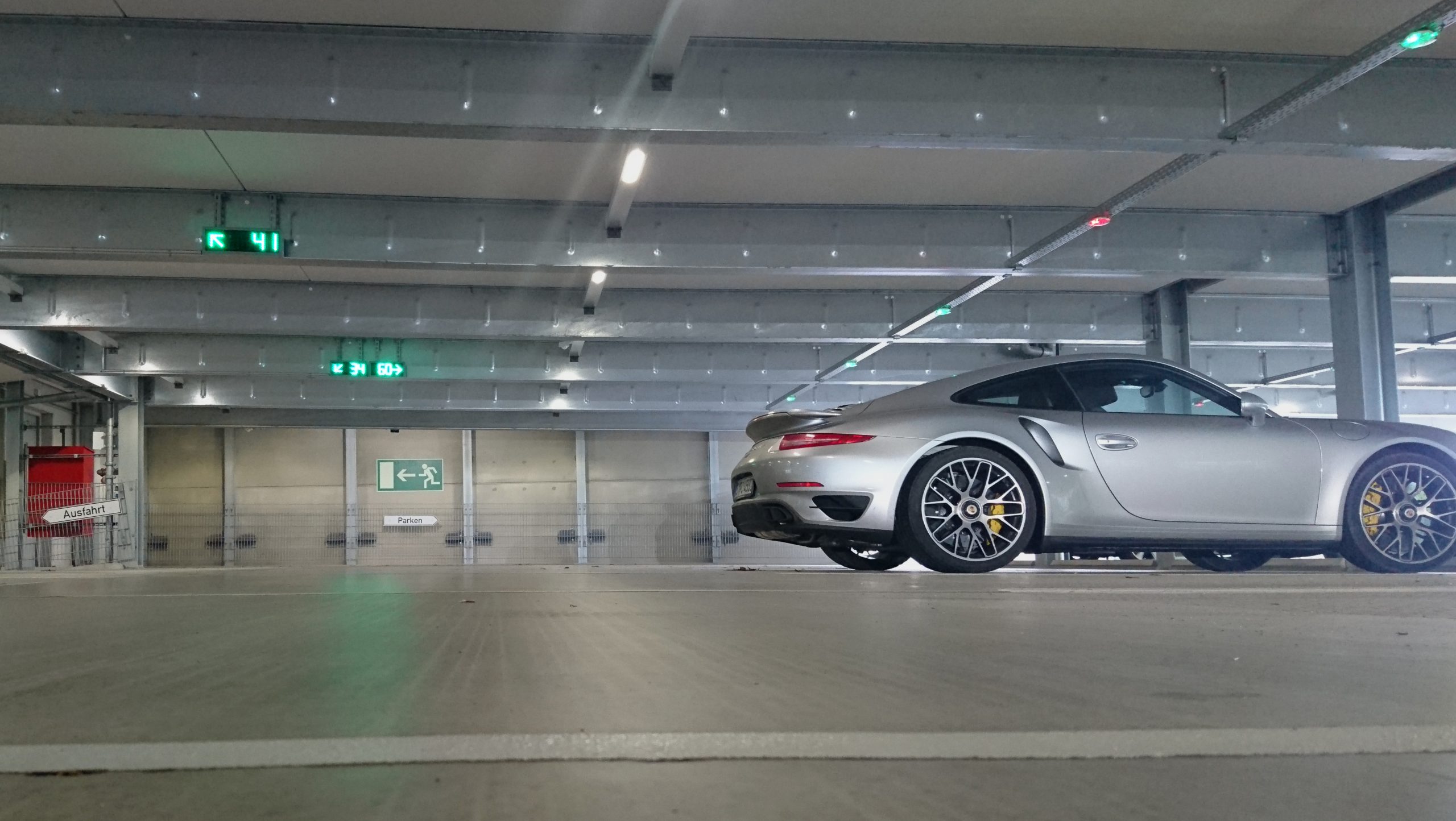
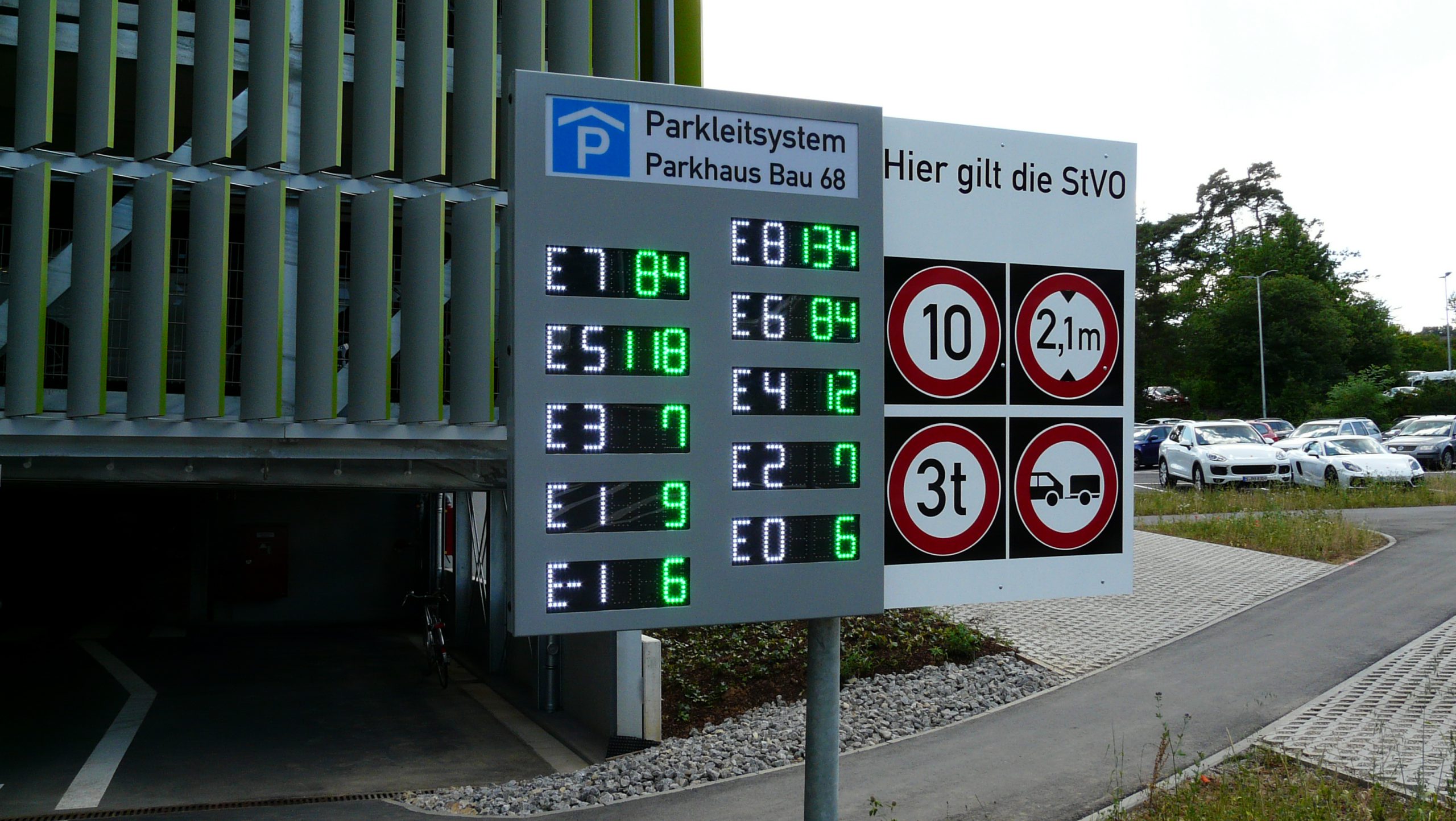
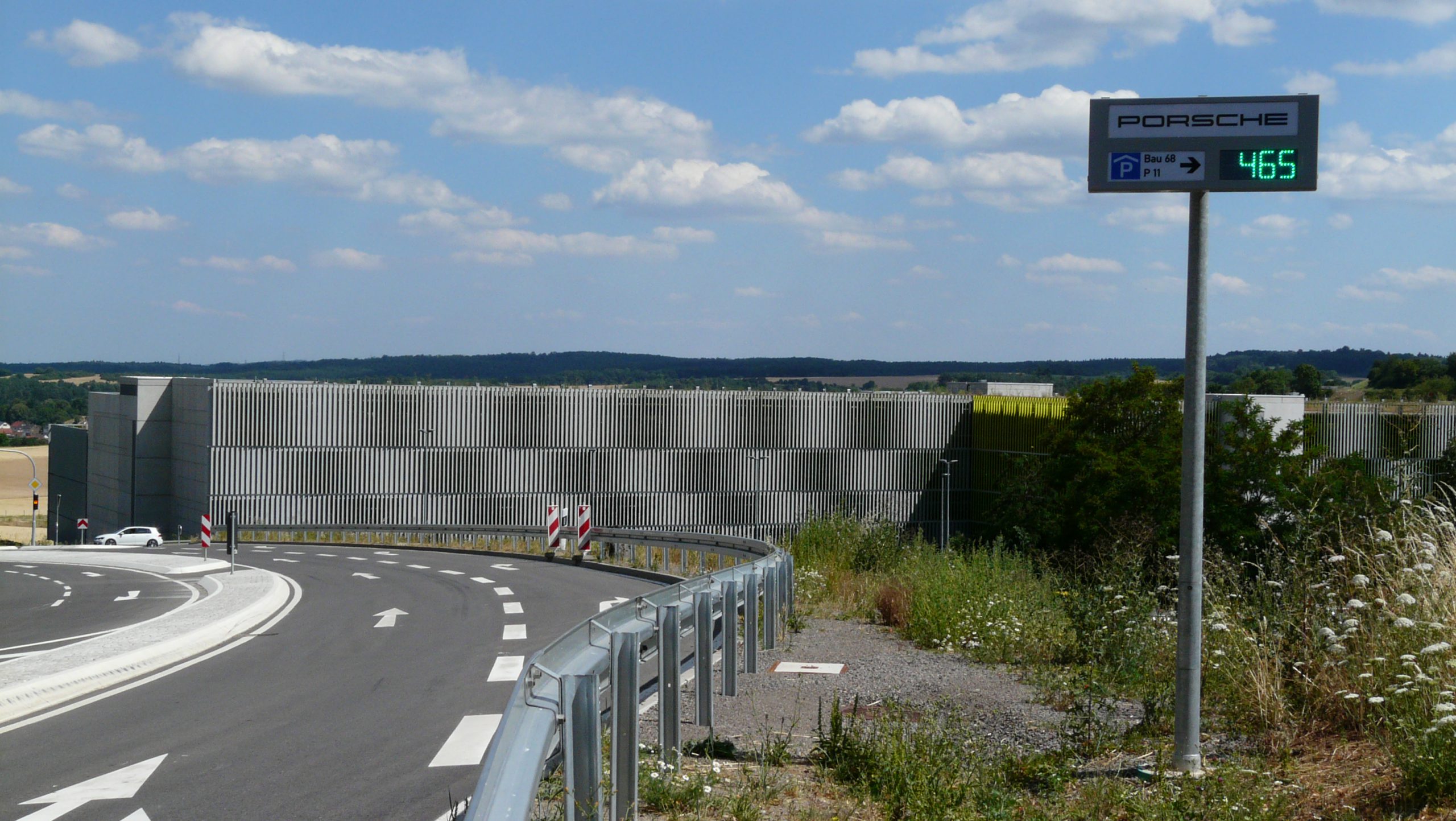
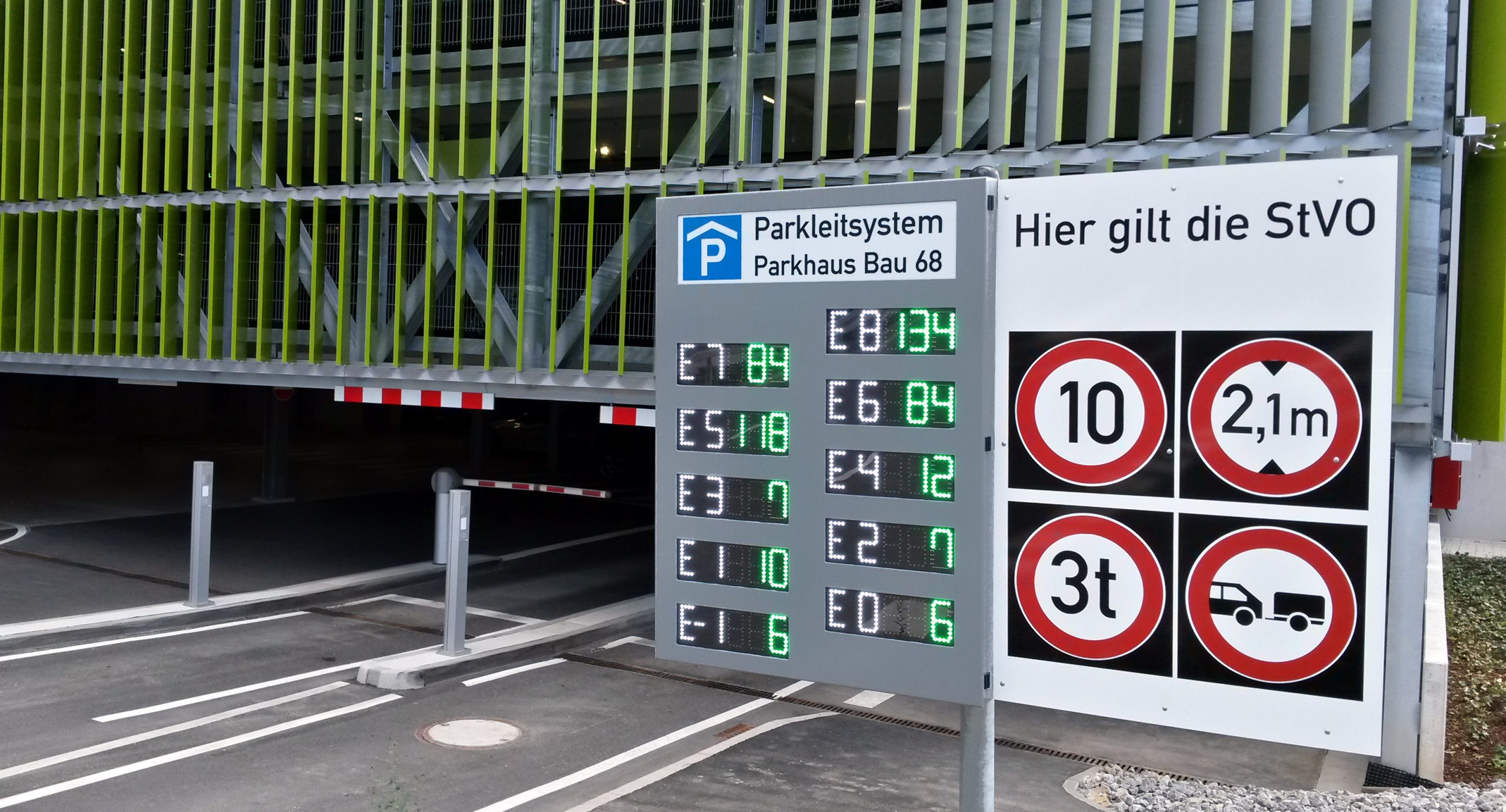

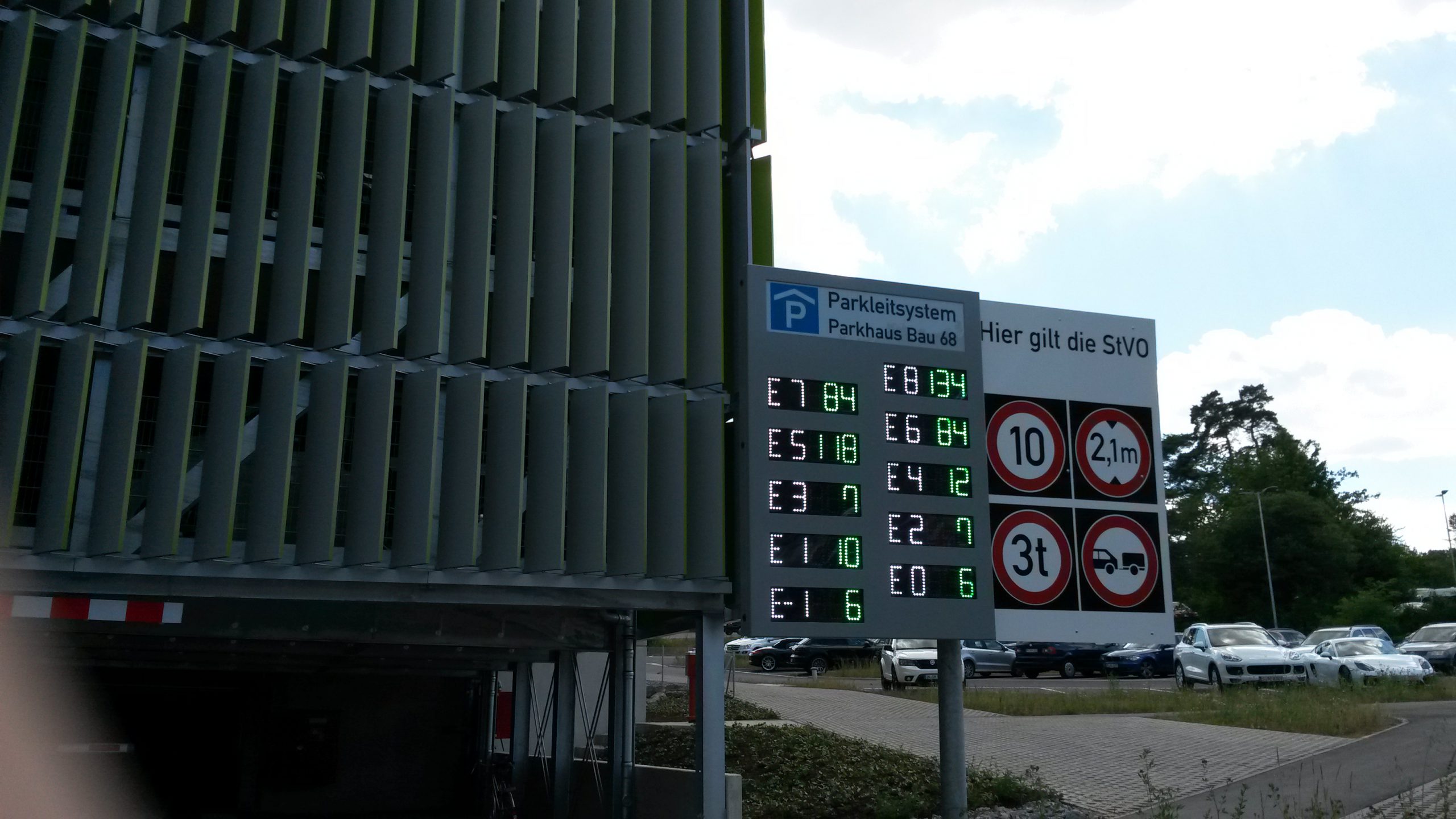

Counting for outdoor areas
Available parking spaces in the outside areas and upper unroofed floors of the parking garages are counted via relay contacts from the existing barrier system, which are integrated in the parking guidance system. On the top floor of the parking garages, ultrasonic drive-through sensors are used to count cars coming from the lower parking levels. The advantage of using ultra-sonic drive-through sensors instead of induction loops is their simple installation on the ceiling above the lane. In most cases, this is the only way to count cars inside a car parking facility, because it is not always possible to cut into the floor in order to install induction loops. Furthermore, the drive-through sensor, named USDS300, detects cars based on the direction they are traveling in, which results in higher accuracy.
Easy administration
A new version of the Visual Control Center (VCC), which is now based on a server/client architecture, was used in this project. Every floor of the parking garages and every parking area has its own visualization, showing every single space sensor, LED sign, drive-through detector and induction loop of the barrier system. Every component shows its actual status and can be configured within the visualization. Manual controls can be added to all components to override the automatic control. Furthermore, statistical data is available and can be graphically visualized.
Access from anywhere
With one client PC in the reception area, it is now possible to visualize and control all parking garages and areas at once. It is also possible to connect several clients to the servers simultaneously. Every client has its own login data and can obtain different rights from the administrator. In addition, it is now easy to read out several parking data via an integrated web API (application programming interface). This can be used to implement the number of available parking spaces on the company website or inside a mobile app.
Economic system
The whole parking guidance system is designed to be very efficient. With an average power consumption of less than 1W per sensor and 4W per LED sign, very little energy is needed for the parking guidance system to work. Even the traffic signs outside the parking garages are back-lit with LEDs to reduce energy and maintenance costs. The electric power consumption of the parking guidance system is compensated many times by the reduced fuel consumption of the parking traffic. Beside this economical perspective, the most valuable reward is a higher employee satisfaction. And this is priceless.